(Well, as many say, you can take a girl out of the city, but you could never take the city out of the girl)
I grew up in a city myself; and being surrounded by traffic jams, hectic lifestyle, fast-paced walking on the pavement is just to me, part of life.
Furthermore, Shanghai is a place which holds special memories for me as it was the place where I was posted for my first business trip and it is also the first place in China that I have visited.
I was definitely excited to see Shanghai and see how the place has changed in the past five years since my first visit.
The thing is, the first time I was there, I was in Shanghai itself, so getting to the city was no feat since I could just catch a cab and in less than 30 minutes, pronto, I am there.
This time around, I am staying in Suzhou, and if you are good in your geography, you'd definitely know that the point to point on the map is not to scale; which in other words meant Suzhou is not that near to Shanghai, though not that far either.
The distance between Suzhou and Shanghai is estimated to be approximately 80km.
To get to Shanghai from Suzhou, one would need a train from the Suzhou Railway station to Shanghai, and the train ride would take about half an hour or so to get to the city.
There were two railway stations in Suzhou; but the new Suzhou Railway Station which is opened in July 2010 is the main station.
(Anyway, the old station was closed at the time of posting for renovation and remodelling).
The new Suzhou Railway station is the place to get the tickets for the high-speed trains to get to most of the major cities and stops in China; and that includes even to the capital, Beijing.
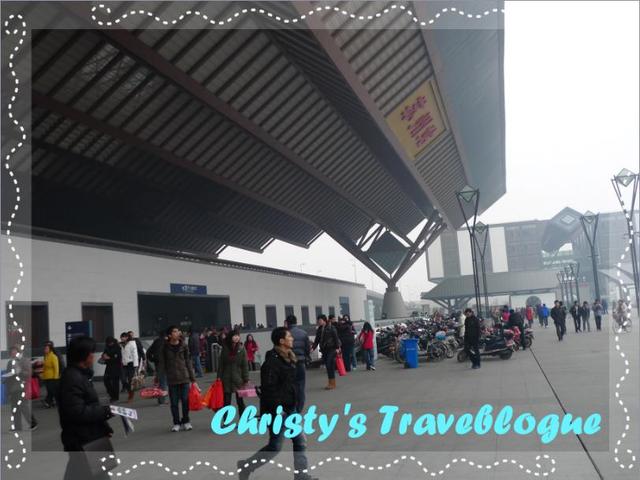
A few things to know about the Suzhou Railway station, or railway/public transportation stations in China to get a traveler started:
1. Most of the signs are in Chinese, but not too bad as they do have English translations as well.
2. One may face problems with the ticketing machines as the machines require a national identification, and there may not seem to be ticket operating window in sight.
However, do check with the guards standing by the doors, they'd be happy to direct you to the ticketing counters.
(It would be better if you know a bit of Chinese as well, after all, these are locals working at the stations).
**There may not be so many help available in Suzhou or other smaller stations, compared to Shanghai**
3. If you are a tourist, which you definitely are, I'd advise to purchase the tickets directly from the counter as they require your passport for verification.
4. Be prepared to have cash or change on hand, as the machines accept change and it may not be easy to find an ATM anywhere in the station.
Also, you wouldn't want to be cursed by the long line of people behind you (there's always a long queue at the ticketing machines).
5. This goes without saying, try to avoid peak hours like morning work hours (7.00-8.00am) and (5.00-6.30pm) where the crowds could seem like they are about to cause a major stampede in the station.
6. Do read the bulletin boards or signs to check on the train departures, and the gates/platforms from which the trains are to depart to avoid getting on the wrong train or joining the wrong queue.
(Sometimes the locals are not that friendly, and some of them could be conmen; so I'd still advise to approach the train operators or the guards).
Facts and Information to know:
The New Suzhou Railway Station (source)
The station is located in the north of city Suzhou, and it has five floors which three (B1, B2, and B3) are underground and two (1F, and 2F) are on the ground. By its planning, B2 and B3 is reserved for city metro line 2 and 4, B1 for taxi cabs etc.. Now 1F in the station is a lounge for trains which start from Suzhou to Shanghai, and 2F is a lounge for trains to Nanjing and trains via Suzhou to Shanghai etc..
Station has 32 entrance fare gates and 21 exit fare gates. It has 1200 chairs for passengers, 3 information kiosks, and 2 machines for due ticket fare. However, 500 more chairs have been set up because of crowded traffic. Now New train station transports more than 100K passengers in and out daily.
Station has three ticket offices now, and they are intercity automatic ticket booking office (18 TVMs), Station No. 1 booking office (19 ticket windows), and temporary booking office (15 windows). The first two ticket offices are to sell high speed train tickets only.
Types to Trains (from Wikipedia)
The letter prefixes on train numbers indicate the type of train. From fastest to slowest, the fast trains are:
C: intercity high-speed rail. Top speed 380km/h (237 mph).
G: latest generation CRH, all with top speeds of at least 330 km/h (over 200 mph) and some up to 380 km/h
D: earlier generation CRH, with top speeds of 250 km/h (155 mph)
The slower trains are:
Z or T: intermediate-speed non-CRH trains. Some of these get up to 160 km/h (100 mph)
K or no letter: slower, cheaper and more crowded trains
On most trains, there are just two classes of seats, first class and second class. Both classes are comfortable, though first has noticeably wider seats. Some trains also have a limited number of VIP sightseeing class or private seat cabins. Some long-distance runs have sleeper cabins.
There may be even be vendors selling some food and drinks, but you can bring your own to save on the cost of traveling as some of these could be higher in cost.
There are a few lines in service, the schedule is also available to check here or here
To get from Suzhou to Shanghai, one should look out for the Shanghai-Nanjing line
Shanghai - Suzhou - Wuxi - Changzhou - Zhenjiang - Nanjing.
As Wikipedia would put it, the Shanghai to Nanjing is the busiest stretch of railway on Earth
It is important to note that at the moment of posting, there are two types of trains operating on this line; which is the D and the G train (refer to the prefixes and types of trains above).
(Quoted from Wikipedia)
a. The D train from the main Shanghai station to Nanjing was one of the first CRH lines and is still in service. It takes a bit over two hours.
b. A new G train line opened in July 2010, running from the new Hongqiao Station in Shanghai, right next to the airport and on subway Line 2. Shanghai-Nanjing time is now 73 minutes for non-stop service; some trains also make intermediate stops.
There is a newer line which was completed in 2011, and the travel time was reduced to less than an hour.
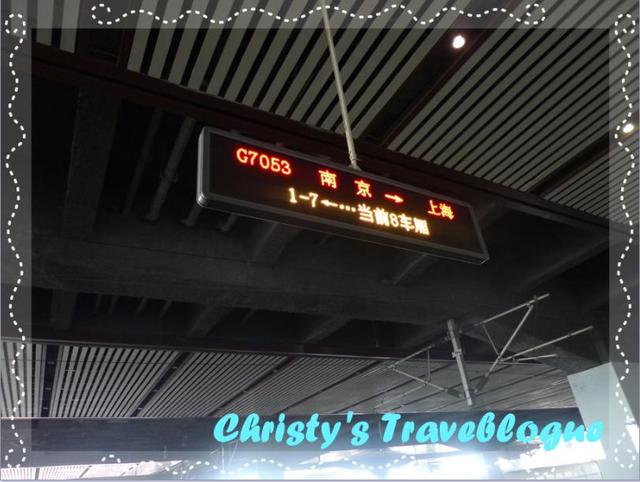
We took the G train; and followed the directions to the gate/platform.
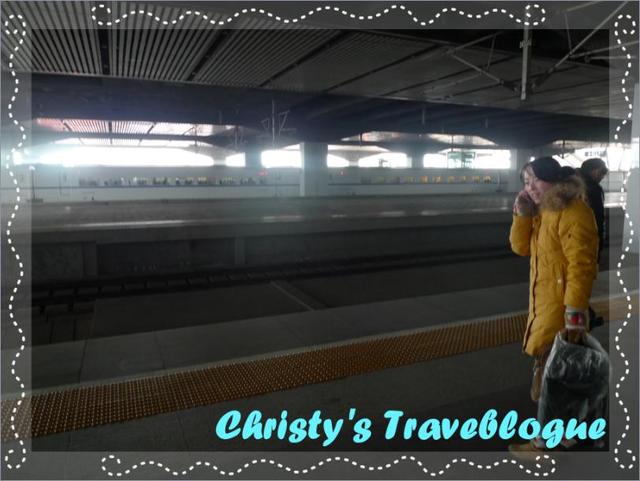
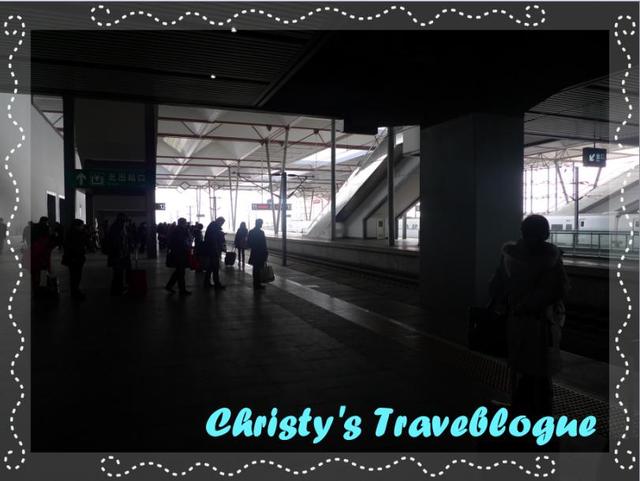
A typical scene on the train platform on a normal working weekday
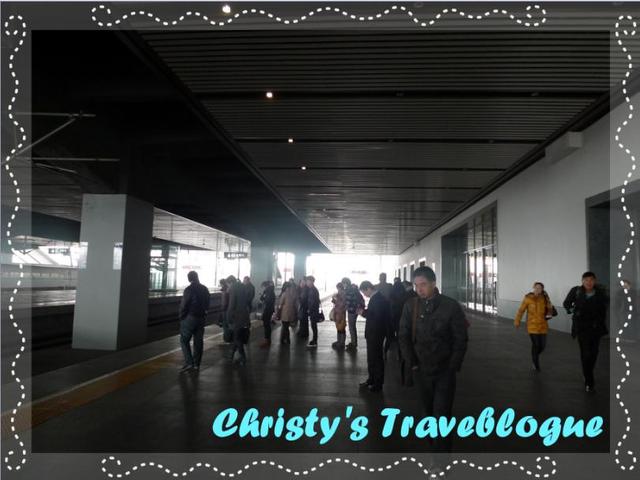
The seats are all assigned, but still there are times when you may find your seats taken up but rare.
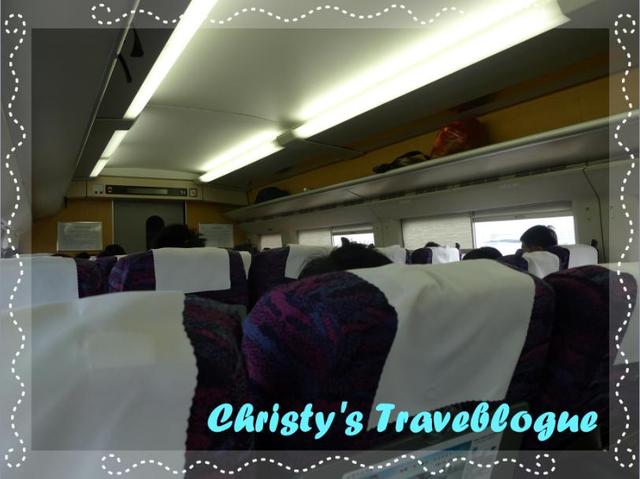
The train offers comfortable seats and a smooth sailing ride through all the different stations to Shanghai, and honestly, I find it a very enjoyable train ride and it barely feels like I was on a train; yes, it was that smooth!
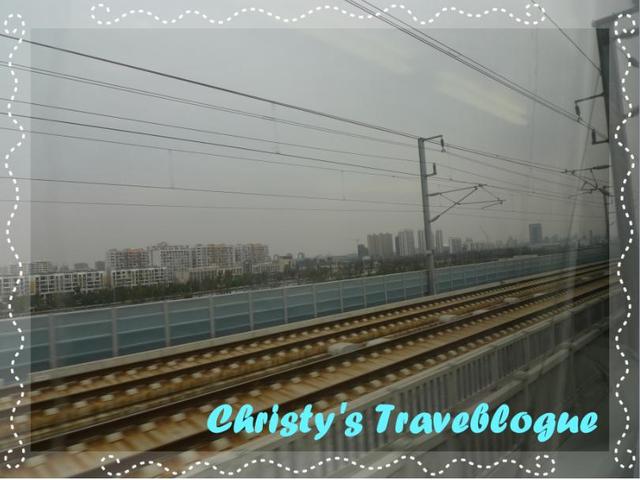
It took us about 30-40 minutes to reach Shanghai Main Station from Suzhou Railway station, and I recommend this as the mode of transport to get to the city as the traffic is just horrendous getting into the city most of the days; especially on weekends.
A few final pointers:
1. Beware of your belongings as there may be pickpockets around in busy areas such as the train stations.
2. There may be many 'black' or illegal cabs around the stations (in Suzhou), do be careful and only take licensed cabs at the level B1 where the taxis are gathered. (Follow the signs).
As always, travel safe, and follow the signs, although the directory and the railway routes map can be confusing.
For further information, you can check some of the travel sites, or you can send me your questions, I could try to answer or get the answers for you, if I can :)

No comments:
Post a Comment